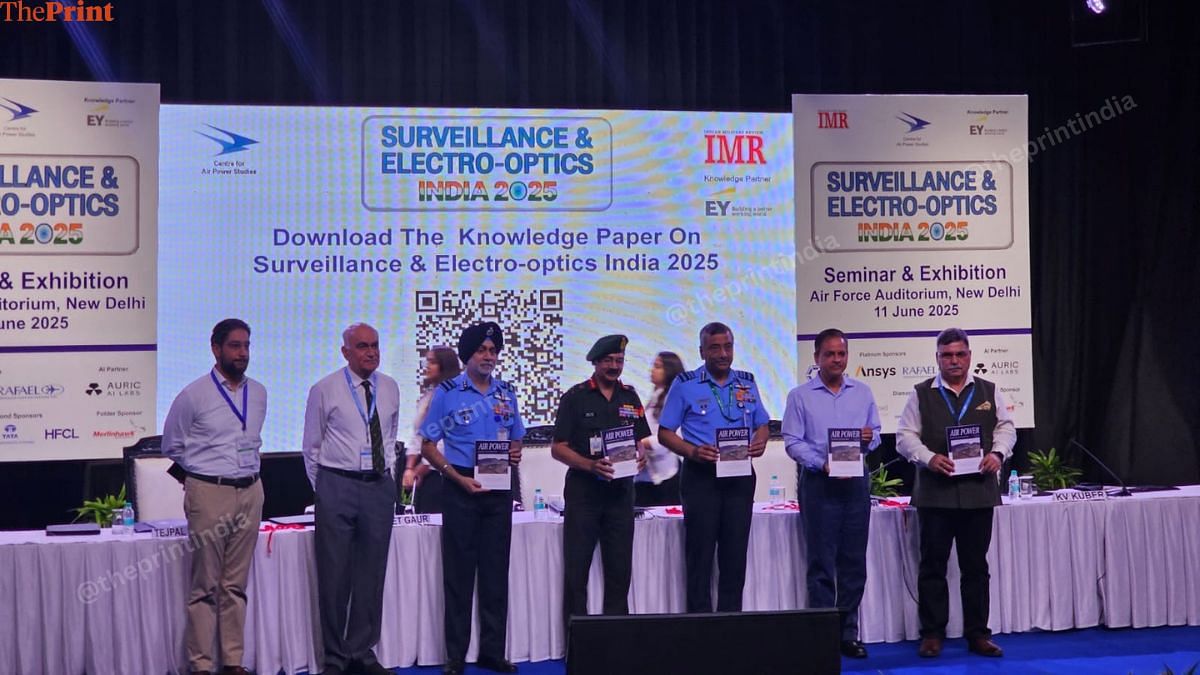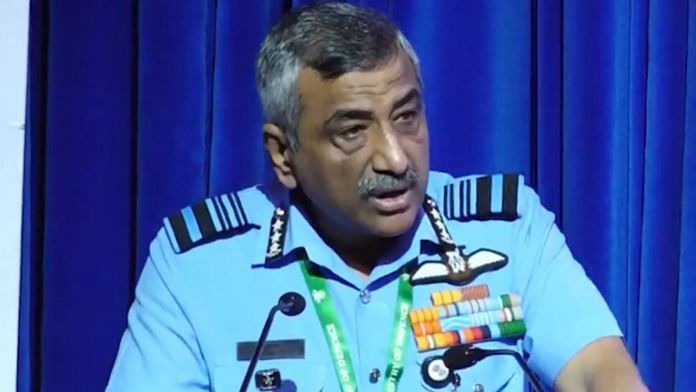New Delhi: Traditional battlefield concepts such as frontlines, depth areas, and rear zones are no longer relevant in an era defined by long-range precision strikes and real-time surveillance, Chief of Integrated Defence Staff (CISC) Air Marshal Ashutosh Dixit said Wednesday.
“When weapons can strike targets hundreds of kilometres away with pinpoint accuracy, the classical ideas of front, rear, and flanks become irrelevant. The front of the theatre merges into one,” he said. “This new reality demands that we extend our surveillance envelope far beyond what previous generations could have imagined.”
Speaking at a seminar on surveillance and electro-optics, jointly organised by the Centre for Air Power Studies (CAPS) and Indian Military Review (IMR) in the national capital, he emphasised that modern surveillance capabilities must now allow the military to detect, track and identify threats while they are still in staging areas, airfields or bases deep within adversary territory.
“This existed as a concept earlier, but today we have the means to realise it,” he said.
Speaking on the achievements of Operation Sindoor, he said, “The operation had clearly demonstrated that indigenous innovation, when properly harnessed, can match and even exceed international benchmarks.”
He added that at the core of the success was IAF’s Integrated Air Command and Control System (IACCS), which was also synced and integrated with the Army’s Akashteer system, providing a joint and integrated approach to the air defence of the nation.
“In modern warfare, information without the ability to act upon it rapidly is of limited value. IACCS compressed our sensor-to-shooter timelines dramatically, enabling responses that outpaced adversary decision cycles,” said Air Marshal Dixit.

“The result was clear—not a single Pakistani aircraft breached our airspace, while our precision strikes successfully degraded their AD capabilities and aerial infrastructure. This success was not accidental but the result of years of indigenous development, rigorous testing and continuous refinement and demonstrated the importance of self-reliance in national security.”
On the lessons from the conflict early last month, Air Marshal Dixit emphasised that the operation reaffirmed the centrality of surveillance in modern conflict.
“Operation Sindoor demonstrated how modern warfare has fundamentally altered the relationship between distance and vulnerability. Precision-guided munitions like SCALP, BrahMos etc., as well as beyond visual range air-to-air and supersonic ground-attack missiles, have rendered geographical barriers nearly meaningless.”
He added, “When hypersonic missiles travel hundreds of kilometres in minutes, and drone swarms reach targets before decisions can be made, real-time or near-real-time surveillance becomes not just helpful, but critical for survival.”
Citing contemporary conflicts, Air Marshal Dixit pointed out that the side with superior situational awareness consistently holds the upper hand on the battlefield.
He further underlined the emerging role of space-based assets and emerging technologies in enhancing India’s surveillance architecture.
He further highlighted the foresight of the Indian Space Research Organisation (ISRO) and Defence Research & Development Organisation (DRDO) in enabling private sector participation, especially through the transfer of Optical Imaging System technology.
“This has already resulted in compact, long-range surveillance platforms that increase operational flexibility. I urge companies to see themselves not just as vendors, but as partners in national security,” he said.
Looking at the future, he added that India’s existing MALE (Medium Altitude Long Endurance) and HALE (High Altitude Long Endurance) platforms, and MQ-9, Rustom and TAPAS unmanned aerial vehicles, must evolve with modular payloads, advanced sensor fusion and artificial intelligence-assisted analysis to provide battlefield commanders with timely, actionable intelligence.
Lt Gen Vineet Gaur, director general (capability development), who was also present at the event highlighted that, of the 52 spy satellites that India is expected to launch in the coming years, 31 will be built by private sector firms.
“This marks a shift in our approach to defence modernisation, one that is faster, more agile and more collaborative with the private industry,” he said. “These satellites will be equipped with cutting-edge camera lenses, advanced sensors and a suite of modern technologies to enhance India’s situational awareness and defence preparedness.”
He also emphasised the prioritisation of underwater surveillance, especially in light of Chinese naval activity in the Indian Ocean Region (IOR). “Our electro-optical platforms must be all-weather and all-domain. Cyber resilience and a common data language are also key for interoperability.”
Air Vice Marshal Tejpal Singh, assistant chief of air staff (plans), who was also part of the panel, emphasised the critical role of advanced surveillance and technology in modern warfare. He further noted that enhanced battlefield imagery and robust monitoring systems have become essential to operational effectiveness.
“We need to integrate our surveillance systems in the same way our air defence systems are integrated. Only then can we achieve true synergy and interoperability,” he said.
(Edited by Sanya Mathur)
Also Read: Defence ministry plans own Raisina Dialogue-style conference—Ran Samvad, likely to be held in August






